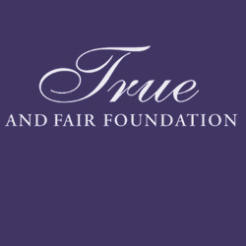There are number of problems with the latest research from the True and Fair Foundation's latest report. Kirsty Weakley highlights some of them.
The latest report from the True and Fair Foundation contains a number of factual inaccuracies about the charity sector which range in seriousness from being laughably ridiculous to having the potential to damage the reputation of the sector.
While we must include the caveat that this is draft version and that Miller has said that she has not yet signed it off, she has said she does not intend to make significant changes.
Leaving aside for the moment the tone of the report, and whether it stands any chance of achieving its objectives, the report contains a number of factual errors.
Gift aid
Gift aid should not be classified as government funding – it is a tax relief on individual donations underpinned by the principle that people shouldn’t pay tax on money given for public benefit.
VAT
Charities do not get a VAT discount as the report suggests. VAT is not paid by customers buying donated goods, benefitting the customer rather than the charity. In many cases it can actually cost charities money because they are billed VAT on the costs of running the organisation, which cannot be passed on to charity shop customers. Irrecoverable VAT is estimated to cost the sector £1.5bn a year.
Business rates
The report says that business rates relief for charity shops costs the taxpayer between £65m and £1.4bn a year – this is a rather wide range. It appears that the report confuses the figure for total charitable rate relief, which is £1.4bn, and figures compiled by Demos, which found that charity shops received £65m in business rates relief.
Next’s profit figures
The report compares charity shops to the clothing retailer Next and claims that Next makes 18 per cent profit. This appears to be the company’s international directory business, and not its UK high-street shop chain. Operating profit for Next UK is 16.3 per cent – less than True and Fair found for charities. Once core costs such as tax are included this figure would fall to around 6 per cent.
Comparisons
The report claims that a US charity retail outfit, Goodwill, has a profit margin of 83 per cent, but the figures are not comparable as its accounts appear to include expenses such as paying shop staff in programme expenditure. Some commentators believe Goodwill actually made a loss on retail last year.
Comparisons of government funding for the charity sector with the bailout of the banking sector is inappropriate both because of the relative sizes of the two sectors and the difference in operating models and sources of income.
Volunteers
The report suggests that volunteers are wasting their time “standing in often empty high-street charity shops” when they could be more productive elsewhere. But volunteering in a shop requires a different set of skills to other aspects of volunteering or social action and there is no evidence to suggest that this legion of committed volunteers would in fact be useful in other functions. Also the voluntary nature of volunteering also means that there is no guarantee that they would be willing to take on other roles.
The regulator
There is no such entity as a UK Charities Commission. There are three distinct regulators covering the UK. The Charity Commission for England and Wales, OSCR in Scotland and the Charity Commission for Northern Ireland. While the report is a draft you would hope that anyone analysing the sector would have a basic understanding of the regulatory landscape.








